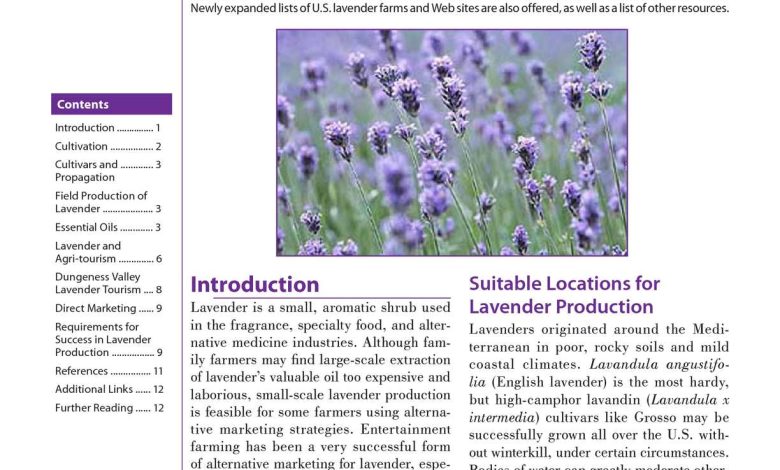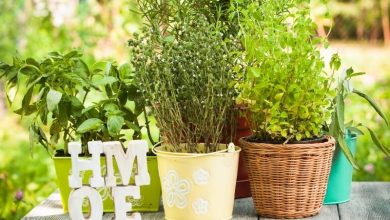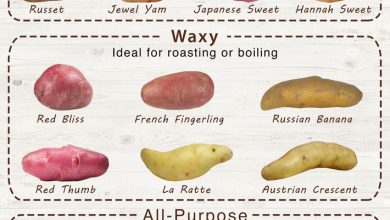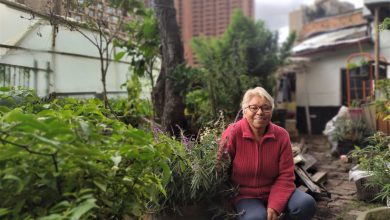Technical report for the cultivation of Lavender

Lavender leaves and flowers are used, very interesting to flavor different gastronomic dishes, for example, stews, salads, jams, fruit desserts and jellies.
It is also used to flavor oils, vinegars and tea. In this context, it can be combined with other plants such as garlic, thyme, pepper and bay leaf. In the case of fish dishes, in some countries it is usually mixed with shallot and parsley.
Other uses of lavender are as an air freshener. To do this, breathable fabric bags are filled with its flowers and dried leaves. This method is also a repellant for moths. In the world of drinks, lavender essence is used to flavor herbal liqueurs, gins, etc.
Lavandula angustifolia
Its common name is lavender or fine lavender, its scientific name being Lavandula angustifolia, and it belongs to the Labiatae family.
It is a perennial plant of the Mediterranean type that reaches heights of up to approximately 1 meter. Its leaves grow opposite and have a sharp silver-green shape. These are, as a whole, narrower than those of the lavender.
Regarding its flowers, they are mauve and blue in different shades depending on the genotype. It blooms in summer.
Lavandula angustifolia is a honey plant, which is why it attracts bees very easily.
Sowing and planting of Lavender
Lavender planting time is during the spring, specifically between the months of April to the end of May. It is a period when the earth takes a certain temperature.
They can be multiplied by seeds, sown in spring, and by cuttings made in late summer.
In cultivation it is a plant that stands out for being repellent of flies and mosquitoes. In fact, its flowers are used as an ant killer.
In ornamental cultivation and for its optimal development, it is recommended to eliminate its withered flowers and dry stems. This operation is carried out in early autumn, around the month of October.
Lavender Harvest
Its stems and flowers are collected from this plant.
In extensive crops, lavender flowers are usually harvested from the second year of cultivation. From them their essential oils, the essence and distill their perfume are extracted.
Its collection is centered in midsummer, at the end of July or beginning of August.
Lavandula angustifolia has healthy properties. As a relaxant, the usual form of use is in the form of lavender bath salts.
On the other hand, there is its essential oil, very valuable due to its characteristics. Its manufacture can be handmade and consists of macerating its fresh lavender flowers in olive oil while its mixture is exposed to the sun. This oil is used to relieve rheumatic, headache and foot pain.
Some people attribute to lavender a series of antiviral, antibacterial and bacteriostatic properties that help in the treatment of respiratory diseases. But medicinal issues should always be treated with caution and always by medical advice or pharmacology professionals.
Necessities for the cultivation of Lavender
Lavender is a xerophilous species, that is, it withstands drought quite well. Even so, in order to take root well after planting, it needs to be watered copiously for several weeks. In this context of resistance to drought, Lavender is one of the aromatic plants used in xeriscaping.
It prefers the Mediterranean and semi-arid climate, with sun exposure. Apart from this, it withstands frost and high rainfall well at seasonal times of the year.
Regarding the type of soil, it prefers calcareous, poor in organic matter, stony and not very humid, or failing that, with good drainage.
Lavender Pests and Diseases
It is a very wild plant, being able to attack some beetles and aphids. As a disease, cases of root rot can occur if watering is exceeded.


![Photo of Garlic Weevil (Brachycerus algirus): [Characteristics, Detection, Effects and Treatment]](https://www.complete-gardening.com/wp-content/uploads/2022/08/garlic-weevil-brachycerus-algirus-characteristics-detection-effects-and-treatment-390x220.jpg)

